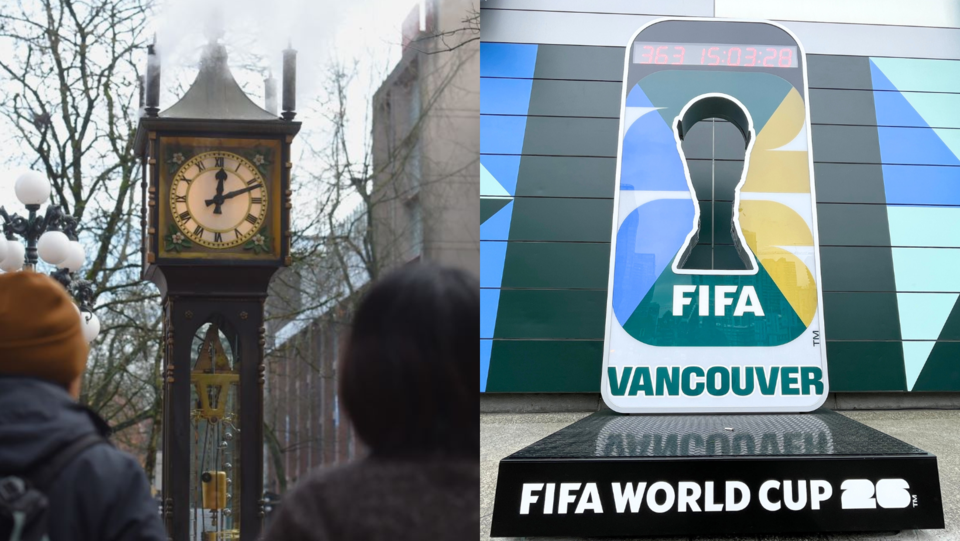Clocks have really changed forms a lot over the years.
Nowadays, most people use their phone or computer as a clock more often than anything, but before all that, watches and public clocks were essential timepieces.
In Vancouver the most famous clock is the Gastown Steam Clock, but it's not the oldest, biggest or even the loudest. It is probably the steamiest, even though an electric motor runs it.
And now there's a new one, of sorts, as FIFA has installed a countdown clock for the 2026 World Cup.
Here are some other local clock facts that shouldn't tick anyone off.
1. Largest clock movement in Western Canada
One of the biggest clocks in Canada is in downtown Vancouver at the Sinclair Centre (which used to be a post office).
Above the corner of Hastings and Granville sits the historic clock built in 1909 by John Smith and Sons.
While the four faces are quite large, the record-holding part of the timepiece is the clock movement, which is the mechanism that makes it all work.
On top of the huge movement, some of the clock mechanism, and bell, are visible to the public.
2. Unusual sundial
In North Vancouver, there's a school with an unusual and complex sundial.
Outside of Highlands Elementary School on Colwood Drive (it's visible from the sidewalk) is an analemmatic dial painted on the ground.
These types of dials are more complex than the classic ones and require a bit of participation.
Simply put, a person stands on a spot on a line that marks the day (more or less) and their shadow will land at the correct time, making it more accurate than simple versions. This one even takes into account daylight saving time.
According to the North American Sundial Society, the Highland School clock is one of two in North America.
3. The city runs three clocks
While there are several public clocks in the city, there are only three run by the City of Vancouver.
They are the Gastown Steam Clock, the Mt Pleasant Clock (at Main and Kingsway), and the Collingwood Clock (at Joyce and Kingsway).
Presumably, the city also runs the clock on City Hall, but it's not mentioned on the website.
4. The moving Birks Clock
The Birks Clock at Granville and West Hastings may not seem like an essential landmark now, but it was in past eras.
"Since 1907, generations of Vancouverites have arranged downtown rendezvous with one simple phrase — 'Meet you under the Birks Clock!'"
These days many would be hard pressed to find the clock without searching for it online first.
And to be fair, there were probably times in the past when people had trouble finding it, because it moved twice (and was removed for a few years).
It was originally installed at Granville and Hastings in 1907, when the city was still young and growing.
Then it was moved in 1913 to Granville and Georgia, where it was located for decades. In 1994, though, it was moved again, back to Hastings and Granville.
But then it was removed for a few years as the Canada Line was built. In 2010, it was set up as it is now.
5. The 9 o'clock gun is sort of a clock
In its basic form, a clock is something that tells people the time. In that sense, the 9 o'clock gun is a clock, or at least the alarm part of a clock.
And it's been telling people the time longer than it's been a gun. The practice of alerting boats in port to the time started in 1894 when the Brockton Point lighthouse keeper would huck a stick of dynamite at 9 p.m. to let everyone know the time.
The gun replaced the dynamite soon after.
Bonus: The giant pendulum in the RBC building in downtown Vancouver is not a clock
While pendulums are often attached to clocks, the giant one in the building at 885 West Georgia St. isn't.
It's a piece of art called "The Pendulum" and is meant to match brain waves, not to measurements of time.



